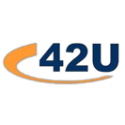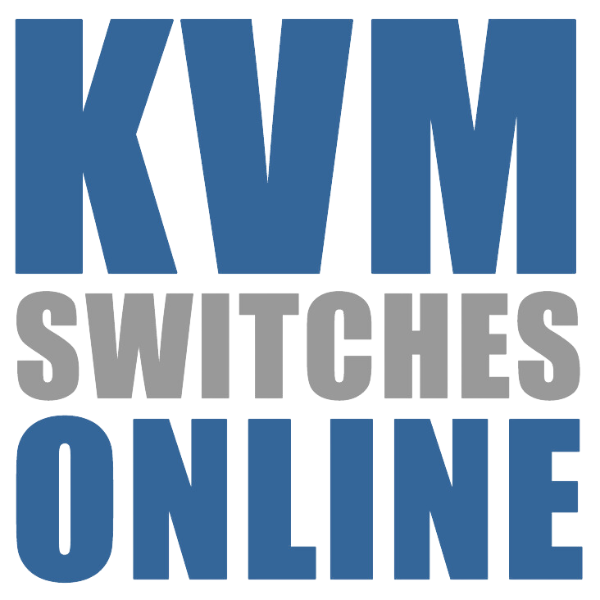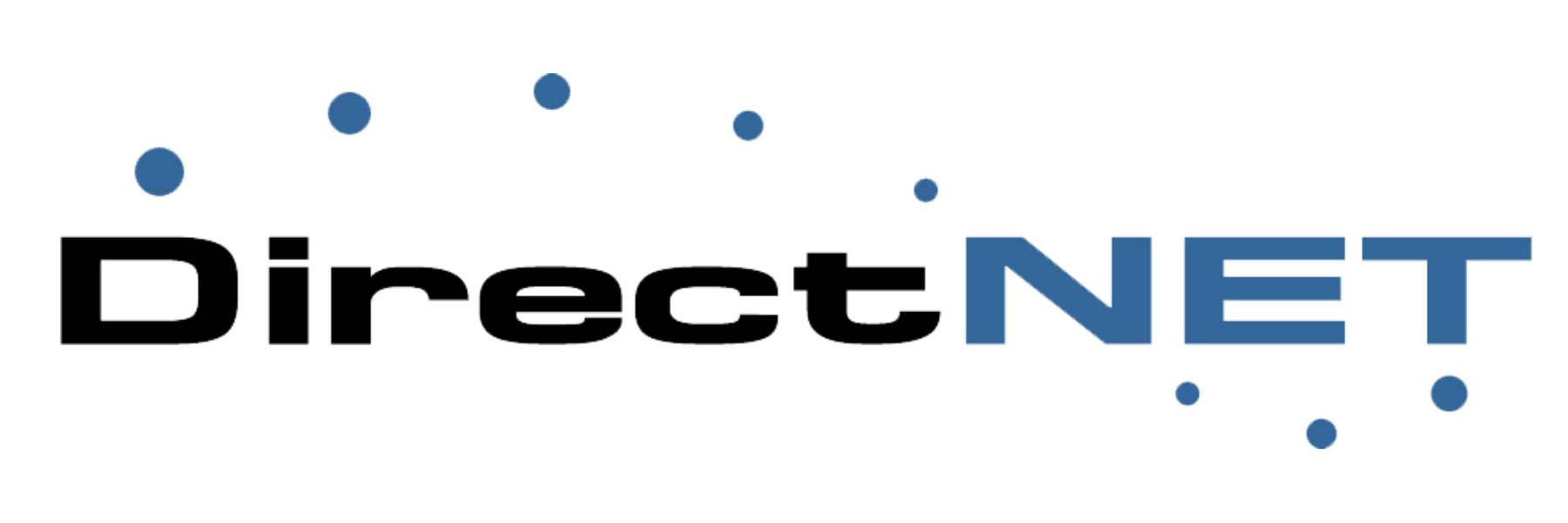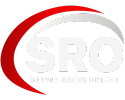
The Top 5 Things to Keep in Mind When Buying a Computer Rack
Feb 28th 2023
Server Rack Basics
What is a server rack?
A server rack is a specialized frame or cabinet designed to securely house servers, networking equipment, and other computing devices in a centralized location. It provides a structured way to organize and manage these devices within a data center or server room environment. Server racks typically feature standardized dimensions (such as 19 inches wide) to accommodate various types of equipment. They also include features like cable management, cooling systems, and often have locking mechanisms for security. The primary purpose of a server rack is to efficiently utilize space, ensure equipment safety, and facilitate easy maintenance and accessibility for IT personnel.
Where are Server Racks used?

|

|

|

|
|
Data Centers: Large-scale facilities housing servers and networking
equipment for organizations or service providers. Server Rooms: Dedicated rooms within offices or buildings for housing IT infrastructure. Telecommunication Facilities: Central locations for telecommunications equipment and networking gear. |
Internet Service Provider (ISP) Facilities: Facilities where ISPs
manage networking and server infrastructure. Corporate Offices: In-house IT departments use server racks to manage local servers and networking equipment. Colocation Centers: Facilities where multiple organizations rent space for their servers and network equipment. |
Cloud Service Provider Facilities: Data centers operated by cloud
service providers like AWS, Google Cloud, or Microsoft Azure.
Educational Institutions: Universities, colleges, and schools use server racks to manage campus IT infrastructure. Healthcare Facilities: Hospitals and clinics use server racks for managing electronic medical records and healthcare IT systems. |
Government Offices: Federal, state, and local government agencies
use server racks for managing government IT infrastructure. Broadcasting Studios: Television stations, radio stations, and media production companies use server racks to manage broadcasting equipment, media servers, and content delivery systems. Industrial Facilities: Manufacturing plants, warehouses, and industrial complexes use server racks to manage control systems, process automation, and data collection equipment essential for industrial operations. |
Picking a Server Rack
Selecting a server rack frame could be the most important part of the designing phase. In order to assist with choosing a proper fit for your environment, here are 8 rack considerations to keep in mind:
What size Rack Cabinet Enclosure do I need?
Selecting the correct server cabinet size depends on 2 major factors: the type of equipment needed for rack mount capabilities and the amount of equipment requiring server rack enclosure space. The key to having a good server rack buying experience is planning. Ideally, users should tally the total amount of rack units currently needed and also keep in mind future expansion because cabinet rack units can not be added on once a server rack is fabricated. If additional rack mount accessories such as environmental monitoring, battery back-up, and/or remote power management are required, extra front and rear cabinet space might be needed in order to sufficiently mount rack accessories vertically and horizontally. Use our selector to filter by size.
What is the significance of Internal Rack Cabinet Enclosure Dimensions?
Internal Dimensions should be used as a guide to gauge the size and amount of equipment one can install in server rack enclosures. Internal vertical measurements from the tallest point of any side rail to the bottom chassis is regarded as total internal height. Internal depth is figured by measuring from the insides of both front and rear doors. Lastly, internal width measurements extend from one side panel to the other.
When accessing rack mount needs, internal dimension measurements should also take into consideration rack equipment and accessories that normally mount internally to the rear or side of cabinets. Additional space can be modified during rack manufacturing to allow for side, rear, and front mounted rack equipment. Additionally, the auxiliary compartment space will provide room for ventilation systems, bulky power cords and cabling management requirements.
What is the significance of External Rack Cabinet Enclosure Dimensions?
Determining server rack location within a data center or co-location facility is often overlooked until the rack enclosure arrives at the dock for delivery. It is very crucial for users to determine if the finalized exact external dimensions of the server rack will fit through doorways and other obstructions of the intended target location. Consider carefully environmental factors such as ceiling height and clearance regulations in your data center or server farm. Also, be sure to respect dimensions of stairways and freight elevators if server racks need to be transported through them for final placement.
Will my Rack Cabinet Enclosure fit in the room it's intended for?
Considerations such as server rack weight and height are very important factors to take into account when moving server racks from place to place. Particular server racks can weigh in at over 300 lbs. and can stand very tall at over 7 feet. Server racks are large items which require considerable effort when moving, rounding corners, lifting up stairs, and fitting in any tight spaces. Please ensure that enough room has been made and accounted for before rack enclosures are purchases and finalized.
Will the Rack Cabinet Enclosure fit through all doors on the way into the destination room?
All of our server rack enclosures ship fully assembled. There are some removable components, such as door as side panels, but that will not change external dimensions of the rack frame which cannot be taken apart. Please consider all product dimensions carefully to ensure server racks meet all clearance regulations.
|
What is a Rack Unit? What does 40U mean? 44U? 48U? etc. A "Rack Unit" or Rack "U" is an EIA standard allowance unit for measuring rack mount equipment. One "Rack Unit" is equal to 1.75" in height. To calculate internal useable space of a rack enclosure, simply multiply the total amount of Rack Units by 1.75". For example, a 44U rack enclosure would have 77" of internal usable space (44 x 1.75). Click here to choose racks by height. How do I calculate how tall my rack should be? how many Rack Units? Many datacenter managers calculate rack enclosure height needed by determining the optimal rack unit usage. For example, if users are aware that future plans call for the addition of 20 2U sized servers, they could count on needing a 44U rack enclosure. This will allow enough internal height for approximately 20 servers, room for a 1U patch panel and a 2U UPS back-up battery. Rear or side vertically mounted power management devices will also have sufficient room to perform their functions. |

|
Should I get a 2-Post rack, 4- Post rack, or Rack enclosure?
To decide between a 2-Post rack, 4-Post rack, or rack enclosure, consider the following:
2-Post Rack:
Advantages: Cost-effective, space-efficient, easy front and rear access.
Best For: Lightweight equipment like patch panels and switches.
4-Post Rack:
Advantages: More stability, higher weight capacity, adjustable depth.
Best
For: Heavier equipment such as servers and UPS units.
Rack Enclosure:
Advantages: Complete equipment protection, better airflow and cable management.
Best For: Secure environments needing controlled temperature and humidity.
Considerations:
Equipment Needs: Weight, size, and access requirements of your equipment.
Budget: Cost differences between racks and enclosures.
Environmental Conditions:
Whether your equipment requires climate control.
Evaluate these factors to choose
the option that best fits your equipment and operational needs.
Rail Comparison

|
Rack Mount Rails: We can manufacture server rack enclosures with
either Universal Mounting Rails (square holes fitted with cage nuts) or
with EIA Standard rails (10/32 tapped holes). All our cabinet rails are
high quality gauge steel (1/8" thick or more) and have an electroplate finish
to maximize protection.
Universal Mounting Rails: Universal rails will support 19" EIA width rack mount and networking equipment and almost all sever equipment. Cage nuts and screws will be needed in order to mount equipment to universal mounting rails. EIA Standard Mounting Rails: Standard Mounting Rails support 19" EIA width rack mount and networking equipment and some sever manufacturer's rack mounting equipment. Please be aware that not all rack mountable equipment will match up against the EIA 1032 hole pattern on Standard Rails. Standard mounting rails will not allow the use of Cage Nuts. Which Mounting Rails do I need? It depends on the equipment you will be mounting in the rack enclosure. Most rack mount and networking equipment such as hubs, routers, patch panels, etc. will conform to EIA Standard hole spacing. However, some sever and rack accessory manufacturers will implement rack mounting kits to assist with attaching equipment to Universal Rails. With this example, proper cage nuts and screws will most likely be needed in order to mount this type of rack mount equipment in one of our server cabinets. |
Mounting Hardware
There are currently 3 types of Mounting Hardware used with our server cabinet rails:
10-32 Tapped Cage Nuts and Screws - American Version - Commonly used in all rack mount applications including music, video, broadcast, data and more. The "10" refers to the drill size for a tapped (threaded) hole. The outside diameter of a 10-32 screw is 0.19", it is smaller than a 12-24 screw. This screw type has 32 threads per inch.
12-24 Tapped Screws - American Version - The "12" refers to the drill size required for a tapped (threaded) hole (a #12 drill is 0.189"). The outside diameter of a 12-24 screw is 0.2160". It is larger than a 10-32 screw. This screw type has 24 threads per inch
M6 Tapped Cage Nuts and Screws - Metric Version - Metric thread size of 6 millimeters. Typical thread size for European rack applications. Also used in Compaq racks and Euro racks sold here in the US. Larger than both 10-32 and 12-24.
What mounting hardware do I need?
It depends on the mounting
rails of the rack enclosure or relay rack you will be ordering. Most 4-Post server
racks, cabinets, LAN enclosures either use Cage Nuts and Screws for square hole
type Universal Mounting Rails or 1032 tapped screws for round hole style EIA Standard
Mounting Rails. Please be aware that almost all 2-post open relay racks use 1032
Tapped Screws (round hole mounting rails).
Doors
Front and rear doors are available in many different sizes and ventilation options. Locking mechanisms are available on most doors; however, please check with our engineers before designing and ordering.

|

|

|

|

|
|
Perforated Steel
w/ Plexiglass Window - Perforated steel door installed with a Plexiglass window. |
Perforated Steel
w/ Plexiglass Window - Perforated steel door installed with a Plexiglass window. |
Steel - The solid steel door ships with no holes or windows. |
Perforated Steel - Perforated steel door creates additional ventilation. |
Louvered - A solid steel door with ventilation slots. |
Top Panels
A top panel will help secure servers and valuable rack equipment from foreign objects that could enter into the Server Rack from above. Top panels can be ordered with perforated slots for added ventilation along with grommet holes for supplementary cable management pathways. Top panels are also designed to accept exhaust fans to help pull hot air out of the rack enclosure.
Please note that specialty cabinets such as Dust and Water Resistant Server Racks will not support ventilated or fan.
Side Panels
Side panels offer security and are available in 3 options: solid fixed, solid removable, and louvered.
|
|
Removable Solid Side Panels: These are recommended should you need
occasional side access to your equipment, or if you intend to gang rack
enclosures together. If you order 2 or more racks, you will only need one
set of Left and Right Side Panels for the rack enclosures on the ends of
your row of enclosures - racks in the middle would not require them as they
will be ganged together. These allow you to have access to the side of the
cabinet. The doors have latches on the front side and can be released. When
released, the panels open like doors. Each removable side panel adds .75
inches to the width of the cabinet. Keep this in mind when figuring out
if you have room for the cabinet.
Fixed Solid Side Panels: These are an economical option for those who do not need side access to their equipment, or are buying a single rack and not planning to expand or gang rack enclosures together in the future. These panels are permanently attached to the Server Rack and maintain the original dimensions. |
|
|
Anti-tip Feet: For mid to top heavy loaded racks, retractable Anti Tip Feet stabilize cabinets ensure your Server Rack will not fall over. |

|
Casters Casters attach to the bottom of server cabinets to help maneuver racks around the data center. Two of the four wheels lock to assist with keeping the Server Rack from rolling. |

|
Levelers Levelers should be used if Casters are implemented to ensure that the rack remains level once it's moved from one place to another. Both Casters and Levelers will install together on your server rack to provide maximum stability. |

|
Air Circulation A server rack enclosure fan is the best way to maintaining a safe operating temperature for valuable rack equipment. Fans attach to the top panel and assists with removing hot air from the server cabinet. A fan mounted on the top of your Server Rack will help to keep your servers at a cooler temperature. A fan is an exhaust fan so it is pulling the hot air out of your server rack bringing in the cooler air from the bottom of the server rack. A single top mounted fan that we offer is rated at 550 CFM single phase 50/60 Hz. |
Standard Server Rack Shelves
Which server rack shelf would work best in my server cabinet? The general rule of thumb is to measure 6" shorter than depth of cabinet for all 4-post cabinets. This measurement will compute the optimal shelf depth for your particular cabinet enclosure. Also, please take into consideration that rails are often set at a distance less then the actual depth of the internal dimension.
|
|
Solid Flat Shelf - Sometimes called a stationary or
fixed rack shelf, a flat shelf mounts to all 4 mounting rails of a 4-Post
Server Rack / Electronic Enclosure. Due to its simplicity, Flat Shelves
will often occupy less than 1U of rack space. Weight Limit: 150 lbs. |
|
|
Adjustable Shelf - Similar looking to a flat shelf,
Adjustable Shelves attach to all 4 mounting rails of a 4-Post Server Rack
/ LAN Enclosure. The main difference between the two is the rear mounting
ears for the Adjustable Shelf are adjustable by 4" less than the shelf depth
and 4" more than the shelf depth. For example, an 18" Adjustable Shelf can
mount on posts ranging from 14"-22" deep.
Weight Limit: 150 lbs. |
|
|
Heavy Duty - Heavy Duty shelves are constructed in
a special manner in order to accommodate particular mounting needs. Heavy
Duty shelves occupy a full 1U (1.75") of rack space and will support a
weight up to 300 lbs. Heavy Duty shelves attach to all 4 mounting rails
of a 4-post server rack.
Weight Limit: 300 lbs. |
|
|
Sliding Keyboard Shelf - This specialty shelf is designed
to accommodate rack optimized keyboards. The Sliding Keyboard shelf attaches
to all 4 mounting rails of a 4-post server rack enclosure.
Weight Limit: 75 lbs. |
|
|
Vented
Flat Shelf - Ventilated Shelves are equal to standard shelves,
though, ventilation slots provide additional air circulation between rack
units. Ventilation Shelves mount to all 4 rails of a 4-post server cabinet. Weight Limit: 150 lbs. |
|
|
Sliding Pullout Shelf - Pullout shelves are useful for positioning
non-rack mountable equipment in a server rack which needs frequent access.
Sliding Pullout Shelves mount to all 4 mounting rails of a 4-post server
rack.
Weight Limit: 150 lbs. |
|
|
Rotating
Keyboard Shelf - Designed to accommodate standard sized keyboards,
these shelves rotate as unit extends beyond the cabinet to make it easy
to type on a standard keyboard. These shelves mount to all 4 mounting rails
of a 4-post server rack enclosure. Weight Limit: 50 lbs. |
Relay Rack Cantilever Shelves
|
|
Cantilever Shelf - Designed to mount to both mounting rails of a 2-Post Open Bay Relay Rack. |
|
|
Vented Cantilever Shelf - Ventilated Cantilever Shelves are equipped with ventilation slots to provide additional air circulation between rack units. Vented Cantilever Shelves are designed to mount to both mounting rails of a 2-Post Open Bay Relay Rack. |
|
|
Center Mount Cantilever Shelf - Designed to evenly distribute weight to both mounting rails of a 2-Post Open Bay Relay Rack. |
Power Distribution
|
|
Power Strips can be classified into 2 categories: standard and intelligent. Standard power strips simply provide evenly distributed electrical power to servers and rack accessories. Sometimes, standard power strips will provide features such as fuse replacement or current output displays. Intelligent power strips provide users with remote power control. This feature will enable you to cycle power or to completely reboot a server or rack device by using a simple internet browser or Telnet session. |
Which Power Strips does my rack enclosure require?
There are 5 main considerations in determining which power strip to use:
- AMP requirements
- Number of outlets required
- Plug/receptacle requirements
- Redundancy requirements (single, dual-power, quad-power)
- Remote or standard power functionality
- Which Power Strips does my rack enclosure require? Vertical and Horizontal PDU's we represent ship with 8,10,11,12, 14, 16, 20, or 24 power outlets. It is key to take into account the power strips total AMP capability and your redundancy needs to ensure proper power requirements can be support by each individual power strip.
- AMP Requirements: We offer 15, 20, and 30 amp power strip models. It is important to calculate the total amperage draw of your equipment to prevent exceeding the recommended amperage capacities of the power strip.
- Plug / Receptacle Requirements: Most server and network
equipment in the U.S. have either NEMA 5-15P standard plugs or NEMA 5-20P standard
plugs. This style of plug will only join with like NEMA 5-15R standard receptacles
or NEMA 5-20R standard receptacles.
Please be sure that the power strip you order has both the correct receptacle standard for you to plug your equipment into and that the plug coming form the power strip has the correct plug to match the power source receptacle you will be plugging it into.
( see NEMA Plug and Receptacle Diagrams below) - Redundancy Requirements: Some higher-end mission critical servers and network equipment offer a redundant power supply option. The idea being if the main power supply in your equipment were to fail, that you would have a backup or fail safe to fall back on, so as to eliminate down time. The power supply failure could be a result of the power unit itself failing or it could be an interruption in the power source. Many data center managers plan for both contingencies and have more then one power drop feeding power to mission critical equipment in each rack enclosure. In other words, rather than plugging both power plugs from mission critical redundant equipment into the same power strip, they plug them into 2 (or more) power strips being fed by 2 (or more) power sources.
- Remote power or standard PDU: When servers are mounted in a rack, most likely
power will be provided by some sort of power strip. Specific power strips made
for server racks mount vertically or mount behind mounting posts in the back
portion of a cabinet. Rear vertically mounted power strips do not occupy any
Rack Units opposite of horizontally mounted PDUs which could inhabit 1U, 2U
or more worth of precious rack space.
Power Distribution Units offers users with evenly dispersed power over the entire power strip. Standard PDUs simply provides users with electrical power only.
In order to cycle power to servers and network equipment, shutting down system power remotely is the only option for a total cold reboot. Remote reboot power management is accomplished through a standard secure internet browser session - no special software is required. In addition, alternate remote access options such as Telnet or serial control are available in select models.

















